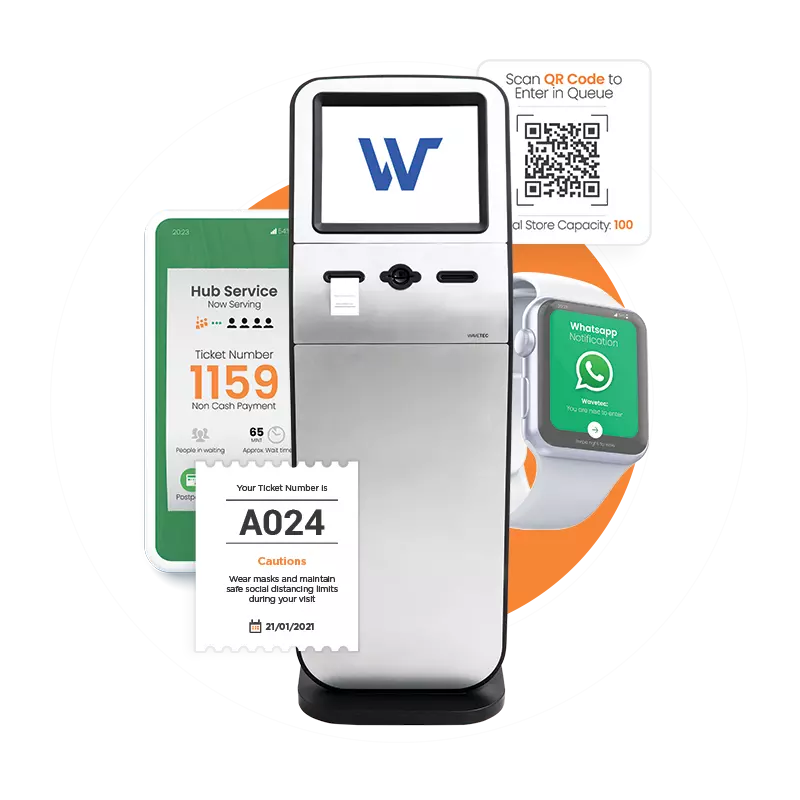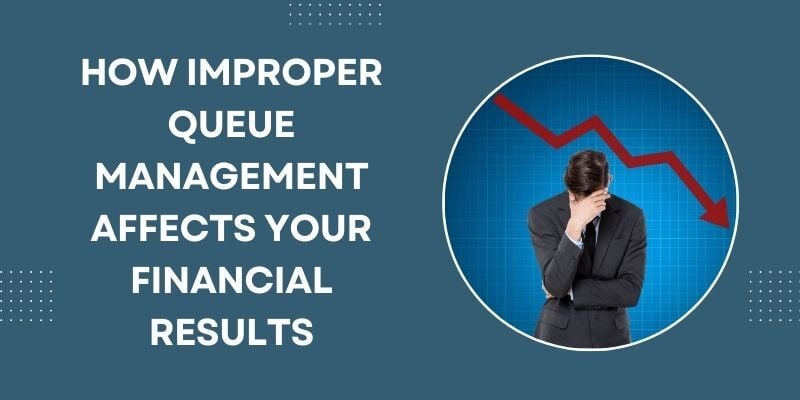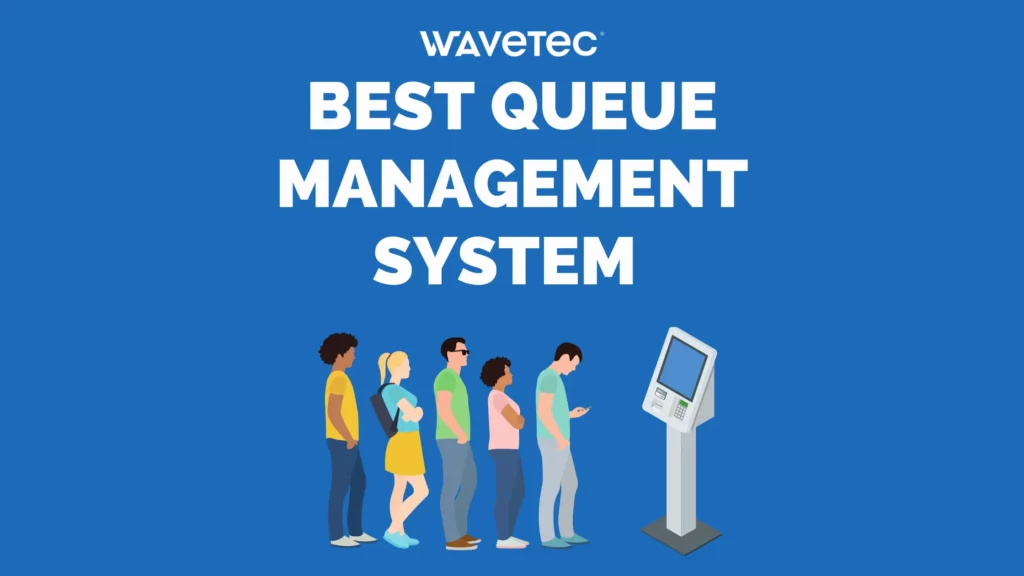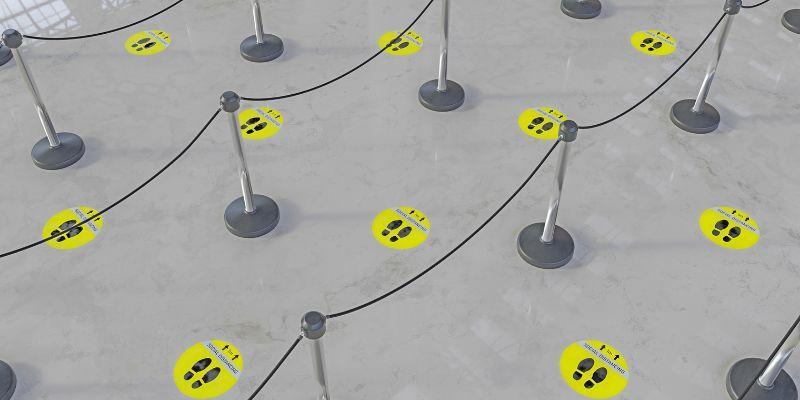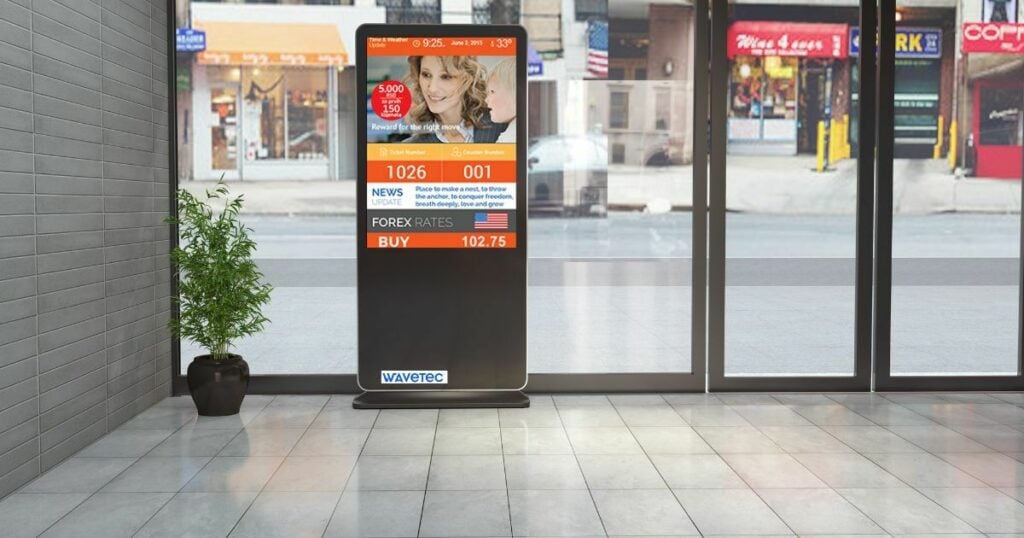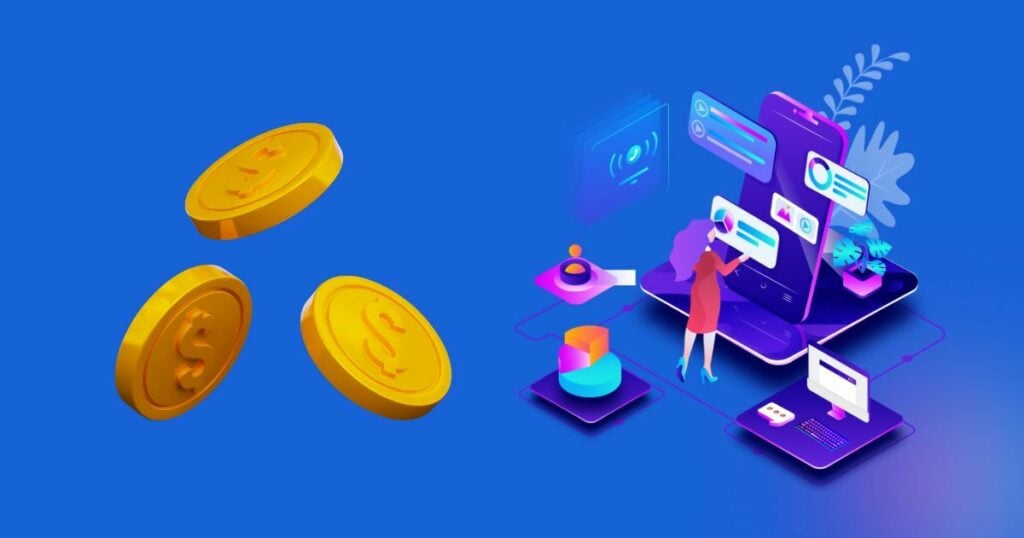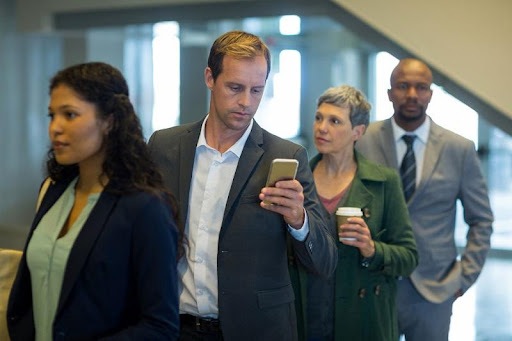Waiting in line is part and parcel of most customer experiences. On some level, queues are inescapable even, as consumer demand will always be higher than the number of counters and service providers available.
Trouble emerges when cases of good customer experience outweigh the number of dissatisfied customers with complaints. Since the key aspect of customer service is the customer’s experience, it is essential to take steps to prevent stressed consumers from defecting to competitors. Most businesses ask how to reduce customer waiting time.
In this blog post, we will explore strategies and techniques to reduce waiting times and enhance the overall customer experience. By implementing these proven approaches, businesses can minimize waiting times, increase customer loyalty, and streamline their operations.
8 Ways To Reduce Queue Waiting Times
These 8 queue management strategies can help to reduce wait times and enhance the overall customer experience;
- Revolutionize Waiting with Virtual Queuing
- People Counting to Reduce Long Waiting Line
- Appointment Scheduling and Booking Software
- Transform Queue Management with WhatsApp Solutions
- Experience Seamless Service with Self-Service Kiosks
- Data-Driven Predictive Planning
- Streamline Service with Priority Queuing and Personalized Calls
- Digital Signage Distractions and Managed Customer Expectations
1. Revolutionize Waiting with Virtual Queuing
To queue virtually is to do so from the comfort of your home or space, contactless and remote. Clients will either already have an appointment booked or will scan a QR code or follow directions on a mobile app or website to be issued a ticket by the queue management system.
Once their virtual place in the queue is secured, they will begin receiving regular notifications about their position in the queue, how much longer their wait is and other information regarding where they must arrive, with what materials, etc.
Without the need to be physically present in the line, customers can utilize their time more efficiently and skip the queue entirely. Crowds will disperse from outside your store and customer satisfaction numbers will soar.
Wavetec’s Virtual Queue Management solutions are designed to support the modern client of a digitized business. These include our innovative WhatsApp Queuing software that supports simple and swift digital onboarding, queuing and feedback registration.
2. People Counting to Reduce Long Waiting Line
Precisely measuring the number of people that enter and exit your store gives you an idea about the occupancy limit. Wavetec’s SafeQ, a people counting system, uses sensors and cameras with central software to integrate real-time consumer traffic pattern insights.
Companies can use this tool for predictive queue management in peak hours and to create reports on the foot traffic that will help them redesign the store’s layout. This can be customized and integrated with digital signage and virtual queueing systems to display occupancy and wait times.

3. Appointment Scheduling and Booking Software
Scheduling appointments before arrival on-premises is a sure way to reduce queuing crowds. Customers visit the website or business application and select the branch, service and time suitable for them. Once they are booked, they will receive regular notifications via SMS, email or application about their appointment details.
This allows them to arrive at the time allotted for them, skip the queue using priority queuing, be served and sent on their way. The result is streamlined waits, predicted flows and reduced wait times.
Wavetec’s Appointment scheduling and booking software is custom-built for your business needs to help anticipate branch traffic and prepare for it.
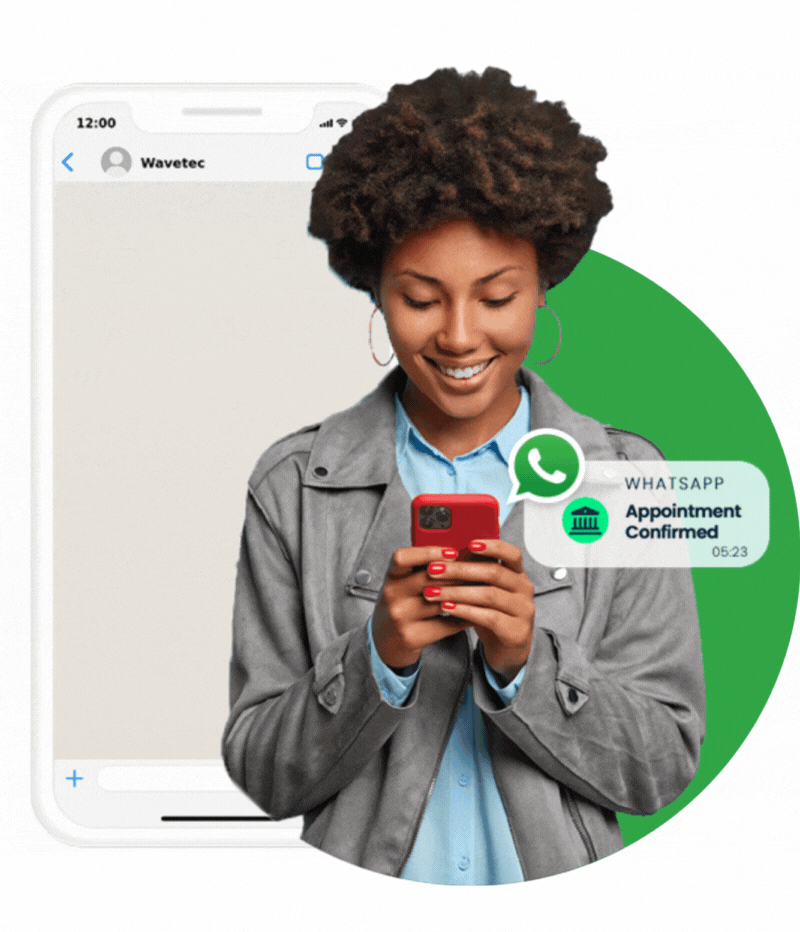
To book an appointment, customers can visit the website or the mobile application and choose the nearest branch and the available time slots. They can also select the service and the person they want an appointment with. After this, customers receive a confirmation message with the appointment details. This collects customers’ personal information, sends reminder notifications and reduces no-shows.
4. Transform Queue Management with WhatsApp Solutions
With WhatsApp becoming the most used messaging application, Wavetec recommends you make this the hub of virtual business. For queue management, Wavetec offers WhatsApp Solutions, comprising WhatsApp Queuing and WhatsApp Appointments.
WhatsApp appointments are similar to Online Appointment Management, except that customers initiate booking by sending a message to the company’s number or scanning a QR code. An automated chatbot confirms the appointment and gives a unique ticket number. Customers can reschedule or cancel appointments conveniently and keep your company in the loop.
WhatsApp Queuing has revolutionized queuing by introducing a ticketless virtual solution. Customers can scan QR codes or message on WhatsApp to receive a virtual ticket and reserve their spot. You can improve the customer experience by providing real-time updates on the queue status, so customers only visit when it is their turn.
5. Experience Seamless Service with Self-Service Kiosks
Wavetec’s Self-Service Kiosk provides customers with a solution that they can operate independently without interacting with a staff member. Tasks such as POS purchase, check-in, ticket printing, and appointment booking have long queues and wait times, which frustrates customers. Offering contactless solutions manages customer visits and gives immediate delivery to clients. These kiosks are useful to any industry, whether retail, healthcare, banking or telecommunications.
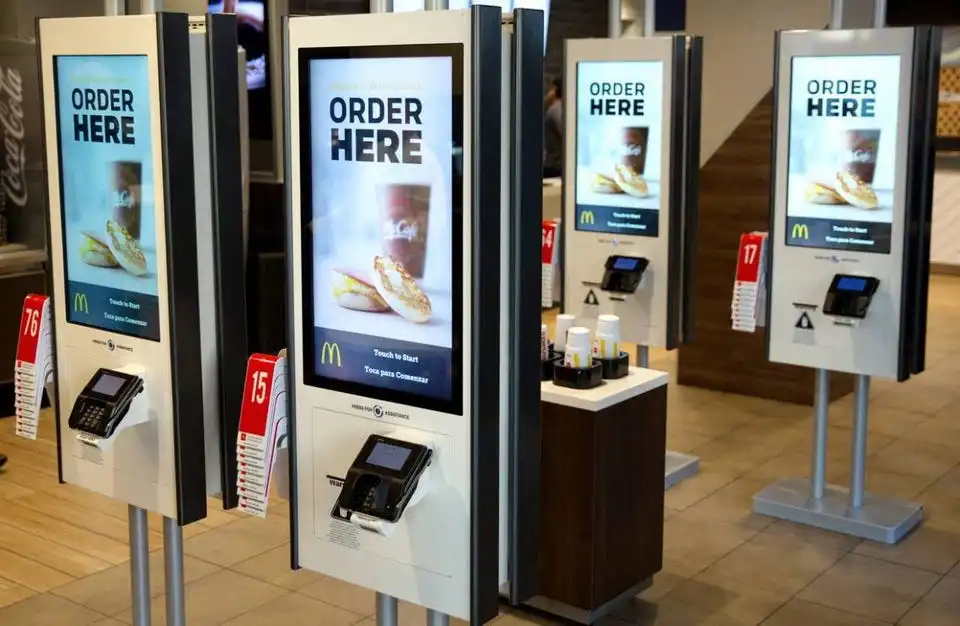
Picture Courtesy Wall Street Journal
6. Data-Driven Predictive Planning
Using Wavetec’s Spectra dashboards and reporting software and hardware solutions, businesses can reduce customer waiting time, queue lengths, and waiting times by collecting queue data, analyzing it, and generating reports.
These will facilitate better and more informed decision-making and reduce waiting time, leading to improved management practices, service delivery, and higher customer satisfaction.
Another aspect of planning is collecting and acting on customer feedback. These allow businesses to know exactly what their customers think and want. With their finger firmly on the pulse of client interest, businesses can not go wrong.
7. Streamline Service with Priority Queuing and Personalized Calls
Customers can be divided according to the business they provide or the benefits they are entitled to, for example, appointment holders, VIPs, those holding loyalty cards or even those with fewer items in their cart.
This allows them to queue with priority and be served quickly and effectively in accordance with their special or privileged needs. The result is more optimized service delivery, shorter queues using categorization and increased consumer satisfaction with personalization.
8. Digital Signage Distractions and Managed Customer Expectations
Customers appreciate transparency and being kept in the loop regarding waiting times, solving waiting line problems and providing effective solutions. This will help better inform their perception of the wait, remove the uncertainty and stress from the process, and ensure a positive waiting experience.
The goal is to transform passive waiting into active waiting. The inactivity frustrates consumers who would prefer to be kept engaged and entertained while they wait. To entertain customers waiting in line, digital signage solutions can be deployed. These will:
- Advertise and market new promotions, discounts and product ranges – creating more cross- and up-selling opportunities
- Provide real-time updates and notifications about queuing information and statistics, like estimated wait times and the ticket number currently being served
- Disseminate information about Covid19, SOPs and operational timings
- Guide customers through the store to service areas, thereby freeing up staff and increasing efficiency
The result will be better informed, guided and satisfied consumers, with more accurate perceptions of waiting times.
What are the Different Kinds of Waiting Queues?
Single-Counter Queues
These are seen in stores and branches where a single counter serves all customers, and the queue formed is a singular winding, snake-like affair.
This system requires floor space and journey flow planning. It admits customers on the basis of first-come, first-serve.
Multiple-Counter Queues
These are seen in stores and branches where multiple counters serve customers, resulting in many parallel queues to choose from.
Both of the above queues take about the same amount of time to reach the front of, with parallel queues having larger variance as a customer can be served faster or slower than anticipated.
Single-Line, Multiple Server Queues
This is a hybrid of the above types of queues, beginning with the customer joining a single queue. As their turn arrives, the queue will split into multiple different counters which the customer can approach to be served.
What are the Factors Influencing People’s Experiences of Waiting in Line?
Ideation of Fairness
If I have fewer items than you but you are ahead of me in the queue, I may think this is unfair as I would take a shorter time to be served. What seems fair to us is a relative judgement based on the value we ascribe to our time and the products and services we are purchasing.
Breaking or skipping the queue is seen as unfair to those who are waiting in line for their turn.
Management of Expectations
Customers expect to be served efficiently and quickly. Their personal estimates of how long the wait may be, how many more tasks they hope to accomplish that day, or whether they have appointments to rush to, all impact their expectations.
The perceived value of the service or product they are queuing for also has an impact on their patience for longer queues – the higher the value, the longer they are willing to queue.
Perception of Wait Times
Depending on what your day looks like, what other tasks you have to complete and how much time you have allotted for the task you are queuing for, your perception of wait time varies. This is different from the time actually spent waiting – it is how long you think or feel like you have been waiting.
There are several factors that can increase or decrease this.
What are the Impacts of Long Queues and Waits?
Higher Customer Turn-Away Rate
Customers will be lost to competitors who have shorter and better-managed queues. This will result in lower revenue and profits for the business as well as a dwindling customer base.
Loss of Brand Image and Equity
Word of mouth is the best marketing and advertisement that any business could hope for. Once customers experience poor service, they are likely to inform and warn others. Similarly, faster service delivery than others in the industry could mean an improved image of your brand, ensuring increased customer volumes.
What causes long queues?
1. Slow service or processing times
Staff shortages, technological issues, or complicated procedures contribute to slow service times. Long wait times for services can make customers unhappy, which might result in them leaving or making others in line wait longer.
2. High customer volume
Businesses may encounter a situation where the number of consumers exceeds their ability to serve them at busy times, during holidays, special events or during the sale season. Customers may end up waiting longer as a result.
3. Limited capacity or resources
Long lines could arise due to a lack of resources or capacity limitations. For instance, having fewer check-out counters or service points can lead to longer lines, especially during busy times. Longer wait times also result from a lack of employees or equipment to accommodate the volume of customers.
4. Inefficient queue management systems
Long lines may result from ineffective queue management strategies, such as a lack of employees or signage and not using technology to optimize customer flow. These lead to confusion among consumers, which further lengthens wait times.
5. Consumer Behavior
Businesses that follow a first-come-first-serve model face delays if customers are indecisive or if they do not show up on time for appointments. Non-compliant customers who do not cooperate with staff members cause an unpleasant environment for other customers in the queue.
Frequently Asked Questions: How to Reduce Waiting Times
How can technology help in reducing waiting queues?
Technology can play a significant role in reducing waiting queues by automating processes, providing self-service options, and optimizing resource allocation. Examples include digital queue management systems, mobile apps for virtual queuing, self-checkout systems, online appointment scheduling platforms, and real-time communication tools to update customers about wait times.
How can data analysis help in reducing waiting queues?
Data analysis can provide valuable insights into customer behaviour, service times, and demand patterns. By analyzing this data, organizations can identify trends, forecast future demand, optimize resource allocation, and make informed decisions to minimize waiting queues.
How long should customers reasonably wait in a queue?
The acceptable waiting time may vary depending on the context and industry. However, as a general guideline, customers typically expect a reasonable wait time to be no more than 10-15 minutes. Anything beyond that may lead to dissatisfaction and potential negative consequences.
Final Words
In conclusion, reducing waiting times in queues is crucial to enhancing customer satisfaction and optimizing operational efficiency. Wavetec, a leading provider of queue management solutions, offers a range of innovative technologies and strategies that can significantly minimize waiting times and provide a more seamless experience for customers.

